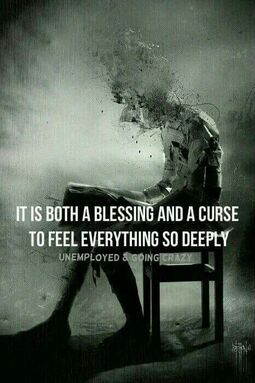 I’ve shared a bit with you about my new fantasy series WIP, as well as one of my contemporary WIP’s, “Glass Animals”, that I think it’s time I share a little bit about my OTHER contemporary fiction, which I am currently calling “How Far You Feel”. While “Glass Animals” was hard to write because it was so personal, this story is challenging for me due to its subject matter and my intensely strong desire to get the representation right. It HAS to be done right. Why, you may ask? Because this WIP is about a 30-something, married woman who had so buried and denied her sexuality her whole life that when she discovers the true depths of her feelings for her best friend, comes to the realization that she’s bisexual. This may not sound like a big deal, but it kind of is because there is a lot of harsh stereotypes around bi people, not to mention the depression that comes from feeling invisible, or completely erased if they are with an opposite sex partner. When I talk to my bi friends about this story, they love the concept. They all tell me how important this is to share and tell, but that’s also where the fear and pressure comes in. My fix for that? Intense research. I always do a fair amount of research for my books, even the fantasy ones, but “How Far You Feel” is currently winning the race when it comes to the sheer number of books I’ve gotten from my local library on gender and sexuality. I shudder to think what kind of opinions the poor librarians are forming about me based on my book history there. But I scoured scores of books, took meticulous notes on the history of bisexuality, plus how the orientation fits within the LGBTQA community. I’ve read personal essays about married women who come out late in life and their love for women. I’ve dug deep into how American’s view “real sex” and how damaging such a narrow view can have on pretty much everyone. I’ve talked at length with my friends, dug deep within myself, and I’ve even watched shows and documentaries that deal with the subject matter. Is that enough? I don’t know.  I spent months and months doing this research, both before I even started writing the story, as well as during the process. Chances are, as I continue with revisions, I’ll go back to the library and see if there are new, or additional resources I can get to help me further shape these characters and their experiences. You may wonder why I’m doing all this for a work of fiction; as fiction, I do have a lot of license to just “go with it” and make things up. But not with this topic, not with this story. My characters may not exist, but that doesn’t mean this situation doesn’t, or that there aren’t others who are struggling with the same thing. With coming out to a straight partner, or that partner suddenly being unsure about their own worth in a relationship because of their partners revelation. It’s a complex situation, one that isn’t fictitious and therefore requires more research and dedication then, say, a purely romance contemporary. This should also explain the nervous pressure I feel when writing this story now, right? My research process may involve a lot of notebooks filled with notes and piles of library books, personal accounts and experiences, but there is always that fear and worry that I’m missing something for the story. It’s the risk every author runs for pretty much every book ever. A man writing a woman, a woman writing a male character, a white person writing a black main character, the list goes on and on. Everyday authors tell stories that may not be their own, or not entirely their own, they share voices that aren’t their own, but if the story is important and worth telling, then it’s on that author to make sure they treat that character, that subject matter, with the respect and delicacy it may require. Which means doing your homework and researching the crap out of the topics you may not know. Hopefully throughout my research process I have accomplished that, but only time will tell. But take it from me, friend: even if it’s scary, be fearless, tell bold stories!
1 Comment
|
Archives
April 2023
|
 RSS Feed
RSS Feed